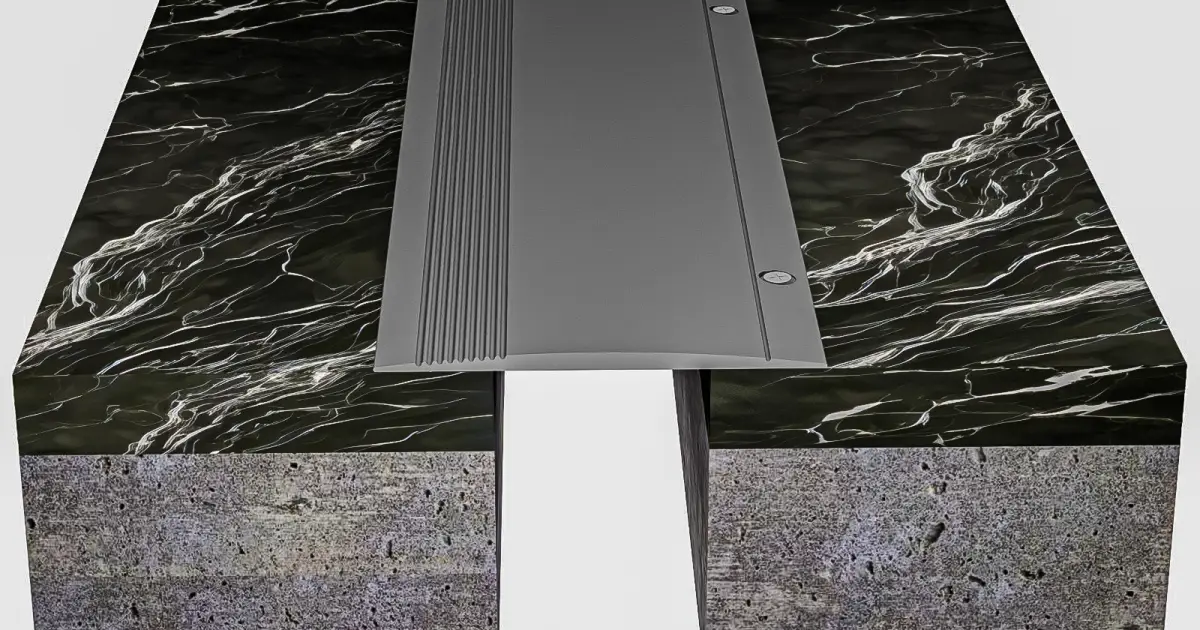
The Importance of Expansion Joints in the Egyptian Code
Expansion joints are a very important component in the design & construction of structures. It ensures the construction safety, durability & adaptability under varying circumstances. The Egyptian Code, like many international standards, emphasizes the criticality of incorporating expansion joints to absorb any structural movements or prevent associated damage. Within this article, you will explore the significance of expansion joints, their application in the Egyptian Code, and the evidence supporting their usage in sustainable construction.
What Are Expansion Joints?
Expansion joints are structural elements that are specially designed to handle all types of
movement within a building or infrastructure system. Movement can occur because of multiple factors, including thermal expansion, seismic activity, wind loads, & settlement over time. By allowing for controlled movement, expansion joints prevent cracking, warping, or other deformations that might happen & affect the integrity of a structure. These joints typically contain flexible materials that fill the gaps between two ends of a structure and offer both
flexibility & stability. According to the Egyptian Code, you will get detailed guidelines on the appropriate placement, design, & materials for expansion joints that recognize their fundamental role in maintaining structures' safety & longevity.
Why Are Expansion Joints Essential?
Thermal Expansion & Contraction: One of the main functions behind expansion joints & which are stressed in the Egyptian Code, is their critical role in absorbing all types of thermal movements. Egypt experiences variations in temperature, especially between day & night and across different seasons. Structures, just like long-span buildings, roads, and bridges, expand during the heat of the day & contract in cooler conditions. Without using expansion joints, this continual cycle of expansion & contraction can lead to cracks, material fatigue, or much worse, catastrophic failure.
Mitigating Earthquake Effects: Egypt is situated in a region that can experience seismic activity, and the integration of expansion joints is an effective way to mitigate the damaging effects of earthquakes. Expansion joints allow buildings to absorb & reduce the energy generated during seismic events, thereby reducing stress on structural elements.
Compensating for Structural Settlement: All structures undergo settlement to some degree, whether due to soil conditions, load distribution, or long-term foundation shifts. Expansion joints offer a way to manage these movements without causing damage to the superstructure. By separating structural components into manageable segments, the Egyptian Code provides a strategy to compensate for settlement without compromising the performance or aesthetics of the building.
Evidence Supporting the Usage of Expansion Joints
·
History of Structural Failures
Numerous case studies highlight the consequences of neglecting expansion joints in construction. For example, infrastructure such as bridges in extreme climates often show signs of stress when expansion joints are improperly designed. Cracks, buckling, and even total collapse, in some cases, can be directly traced back to declared thermal or seismic movements.
With Egypt's climate & growing urbanization, following expansion joint guidelines is a must than ever. The Egyptian Code draws from international best practices to provide a comprehensive framework to address any kind of risks to ensure resilience in both public & private sector projects.
Successful Implementation Examples
Egypt has seen huge success in projects where expansion joints were implemented according to Code specifications. For instance, modern bridge projects across the Nile have reflected exceptional durability & functionality due to the application of expansion joints. These bridges show minimal signs of wear despite heavy traffic & temperature fluctuations on them. Like in urban construction projects, Cairo has included state-of-the-art expansion joint systems to increase building lifespans & improve safety. Modern technologies such as stylometric bearings, neoprene pads, or thermal-resistant materials are excessively used in alignment with the Code's strict requirements.
Key Guidelines from the Egyptian Code
·
Placement & Spacing: Proper placement and spacing are essential principles that are highlighted in the Egyptian Code. Depending on the type of structure, expansion joints are placed at defined intervals to avoid stress concentrations. For example, in long-span bridges or highways, joints are spaced to handle thermal effects over substantial distances.
Material Selection: The Code specifies materials that offer durability & compatibility with the region's environmental conditions, such as rubber, neoprene, & composite fillers that are common due to their resistance to heat, abrasion, & weathering. The emphasis on material quality ensures the long-term performance of these joints, even under challenging conditions.
Design Considerations: Design guidelines in the Egyptian Code take into consideration the type of structure, expected loads, & environmental factors. Joint width, depth, & flexibility are all essential parameters especially for different applications. The Code also includes provisions for dynamic loads, such as those experienced in high-rise buildings or transportation infrastructure.
Benefits of Following the Egyptian Code
·
Improved Safety: The main benefit of following the Egyptian Code's provisions on expansion joints is to enhance safety. By mixing these essential elements, architects and engineers prevent sudden collapse or structural damage caused by unexpected movements.
Structural Longevity: Expansion joints take part in extending the longevity of buildings & infrastructure. It prevents cracks, water ingress, & structural fatigue, along with reducing maintenance costs & extending the lifecycle of projects. This offers long-term financial & environmental benefits.
Following Global Standards: The Egyptian Code aligns with international standards along with promoting confidence among investors & collaborators in the construction industry. Projects that follow these guidelines are more likely to meet global benchmarks for quality, safety, & durability.
Future Innovations!
As technology develops, iChem company keeps improving the design & application of expansion joints. New inventions & creativity like self-healing materials, smart sensors that monitor joint performance, & advanced simulation tools for stress analysis, are all likely to shape the future of construction in Egypt. These advancements support the existing Code, ensuring it's kept up to date with cutting-edge practices. To sum up, the usage of expansion joints is a non-negotiable aspect of sustainable & resilient construction practices as outlined in the Egyptian Code. These expansion joints from iChem preserve all structural integrity to ensure safety and adapt to the natural & environmental challenges of Egypt's diverse landscape. By following the appropriate guidelines, engineers & builders play a critical role in delivering infrastructure that experiences the test of time & contributes to the nation's growth and development.

